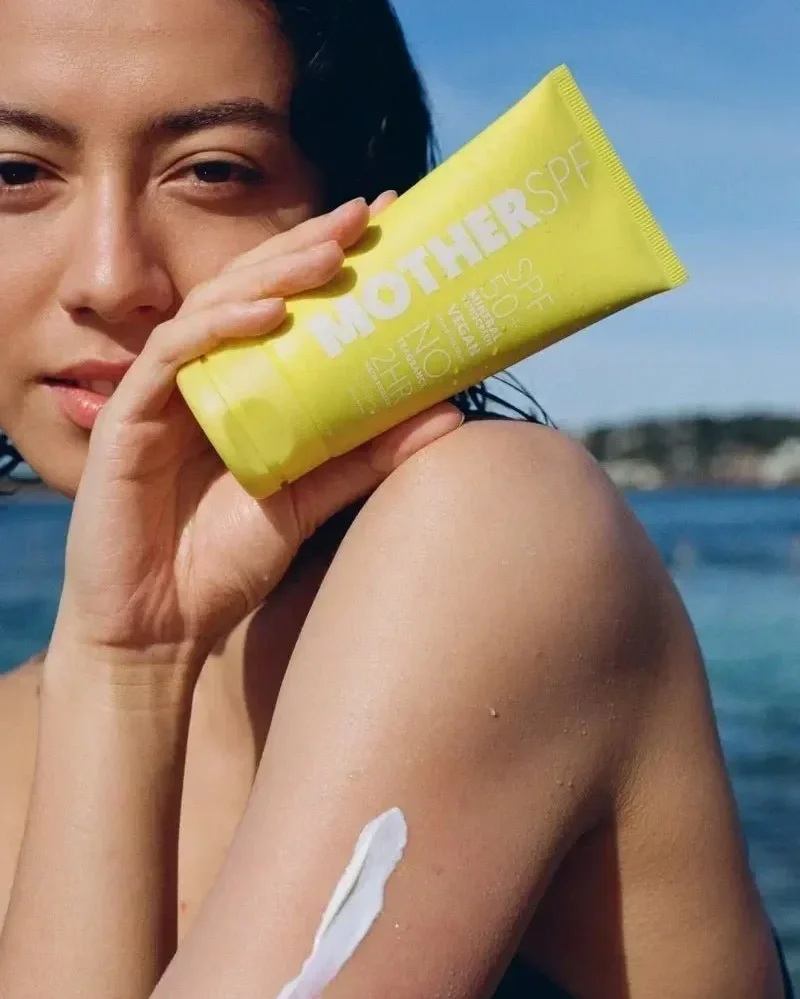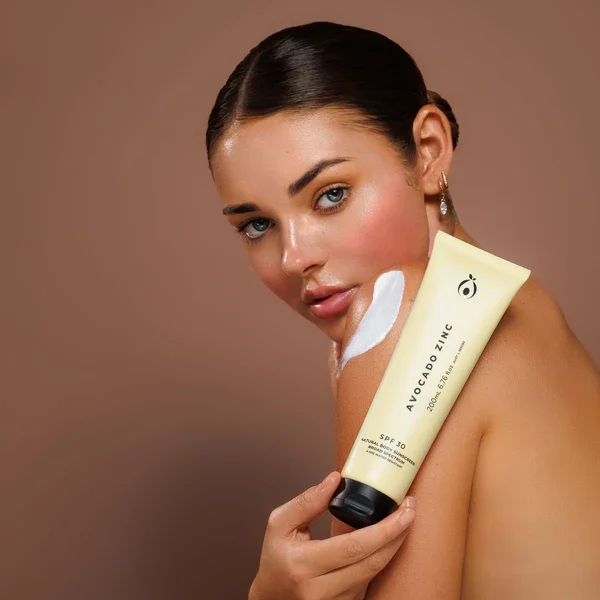Physical vs Chemical SPF: Which is Better for Your Skin
Sunscreen is a critical tool in protecting your skin from harmful ultraviolet (UV) rays, which can cause sunburn, premature ageing, and skin cancer. When choosing a sunscreen, one key decision is whether to use a physical (mineral) or chemical SPF. Each type has distinct mechanisms, benefits and drawbacks. This blog post explores the differences between physical and chemical SPF, outlining their pros and cons to help you decide which is best for you.
What is SPF?
SPF, or Sun Protection Factor, measures how well a sunscreen protects against UVB rays, which are primarily responsible for sunburn and skin cancer. Sunscreens are broadly categorised into two types: physical and chemical, based on how their active ingredients work to block or absorb UV rays.
"Mother SPF is one of my go-to choices for a clean, reef-safe physical sunscreen that feels light on the skin. It’s packed with skin-loving ingredients and offers reliable protection without the heavy feel."
- Dr Emily Alfonsi
Physical SPF: How It Works
Physical sunscreens, also known as mineral sunscreens, use active ingredients such as zinc oxide, iron oxide and titanium dioxide to create a barrier on the skin. These ingredients reflect and scatter UV rays, preventing them from penetrating the skin.
Pros of Physical SPF
Broad-spectrum protection: Mineral sunscreens naturally protect against both UVA (ageing) and UVB (burning) rays, making them effective without requiring additional ingredients.
Gentle on sensitive skin: Because they sit on the skin’s surface and don’t penetrate, physical sunscreens are less likely to cause irritation or allergic reactions, making them ideal for sensitive skin.
Longer shelf life: Mineral ingredients are stable and less likely to degrade over time compared to chemical filters.
Environmentally friendly: Zinc oxide and titanium dioxide are generally considered safer for marine ecosystems, particularly coral reefs, as they are less likely to contribute to environmental damage.
Cons of Physical SPF
Visible residue: Physical sunscreens can leave a white cast on the skin, particularly on darker skin tones, though new formulations are improving this issue.
Texture: They often feel thicker or heavier on the skin, which some users find less comfortable for daily wear.
Reapplication challenges: The thicker consistency can make reapplication over make-up or throughout the day less convenient.
Limited water resistance: Some physical sunscreens may not perform as well during swimming or heavy sweating unless specifically formulated for water resistance.
"La Roche-Posay is my staple for high-performance chemical sun protection that suits all skin types. It’s lightweight, non-irritating, and perfect for daily use , even on sensitive skin."
- Dr Emily Alfonsi
Chemical SPF: How It Works
Chemical sunscreens use organic compounds such as oxybenzone, avobenzone, octinoxate and octocrylene to absorb UV rays. These ingredients penetrate the skin, convert UV rays into heat and release that heat.
Pros of Chemical SPF
Lightweight and cosmetically appealing: Chemical sunscreens usually have a lighter texture, absorb quickly and blend seamlessly into the skin, making them ideal for daily use and layering under make-up.
No white cast: They are typically invisible on all skin tones, offering a more aesthetically pleasing application.
Water resistance: Many chemical sunscreens are formulated to be water or sweat-resistant, making them suitable for active lifestyles or beach days.
Broader product variety: Chemical sunscreens come in a wide range of formulations, including sprays, gels and lotions, catering to different preferences.
Cons of Chemical SPF
Potential for irritation: Chemical filters can irritate sensitive skin or cause allergic reactions in some people because they absorb into the skin.
Delayed effectiveness: Chemical sunscreens usually require 15–30 minutes after application to start working effectively.
Environmental concerns: Ingredients like oxybenzone and octinoxate have been linked to coral reef bleaching and marine ecosystem damage. Many chemical sunscreens are now formulated without these ingredients; look for a “reef safe” brand.
Stability issues: Some chemical filters can degrade in sunlight, requiring stabilising ingredients to maintain effectiveness.
Absorption into the bloodstream: Studies have shown that certain chemical sunscreen ingredients can be absorbed into the bloodstream, though no definitive health risks have been confirmed.
"I love Avocado Zinc for its gentle, 100% mineral formula that’s perfect for sensitive skin and everyday wear. It gives me broad-spectrum physical protection with a smooth, non-greasy finish."
- Dr Emily Alfonsi
Which is Better for You?
The choice between physical and chemical SPF depends on your skin type, lifestyle and priorities.
Choose physical SPF if:
You have sensitive skin.
You prefer eco-friendly products.
You need immediate protection for spontaneous outdoor activities.
You’re concerned about chemical absorption or prefer a natural alternative.
Choose chemical SPF if:
You want a lightweight, invisible formula for daily use.
You need water-resistant protection for sports or swimming.
You prefer a wider variety of product textures (sprays, gels, etc.).
You’re not prone to skin irritation from chemical filters.
Tips for Choosing and Using Sunscreen
Look for broad-spectrum protection: Ensure the sunscreen protects against both UVA and UVB rays.
Check the SPF rating: SPF 50 or higher is recommended for daily use.
Apply generously: Use about 30–40 ml for full-body coverage, and reapply every two hours or after swimming or sweating.
Patch test: If you have sensitive skin, test a new sunscreen on a small area before full application.
Conclusion
Neither physical nor chemical SPF is universally “better” as each has unique strengths and weaknesses. Mineral sunscreens excel in safety and environmental friendliness but may feel heavier or leave a white cast. Chemical sunscreens offer lightweight, invisible protection but can irritate sensitive skin and have environmental impacts. By understanding your options, you can choose the sunscreen that best protects you and aligns with your values. Make sunscreen a daily habit, wear protective clothing and organise regular skin checks to catch any issues early. Stay safe in the sun and keep your skin healthy!
Written by Dr Emily Alfonsi
MBBS, FRACGP, DRANZCOG
Medical Director, Shade Skin
Dr Emily is a skin cancer doctor with advanced training in diagnosis and treatment. She has personally detected and treated hundreds of skin cancers and is passionate about early intervention and patient education.



